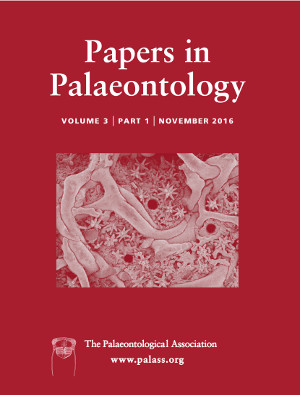Reg. Charity No. 1168330

Megacardita Sacco is a poorly known and misunderstood carditid genus in the subfamily Venericardiinae. The only species frequently reported from the Miocene of Europe is the type species M. jouanneti (Basterot), often considered to be a highly variable species. The genus also has been used for fossil and living species from disparate areas and ages. In addition to M. jouanneti, six other species were identified in the present work: M. brocchii (Michelotti), M. guenterti Pfister & Wegmüller, M. hoernesi sp. nov., M. ignorata Cossmann & Peyrot, M. laeviplana (Depéret) and M. dertavicula (Sacco). The new species is described from the Langhian of the Vienna Basin. The seven species cover a stratigraphic interval ranging from middle Burdigalian to Messinian, and a palaeogeographical area encompassing the north‐east Atlantic, the Western and Central Paratethys, and the Mediterranean. The genus apparently radiated from the central European basins, but its evolutionary relations with other carditids remain unclear. Two additional species are also tentatively referred to Megacardita: M.? laticosta (Eichwald) from the Langhian of Ukraine and Poland, and M.? redoniana nom. nov. for Cardita striatissima auct. non Cailliaud in Mayer from the Messinian–Early Pliocene of France and Portugal. There is no evidence of a wider distribution of Megacardita, either stratigraphically or geographically.